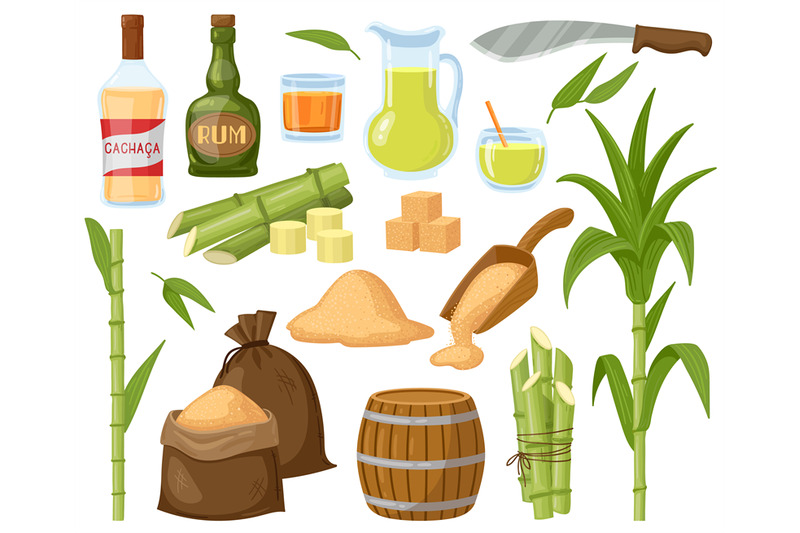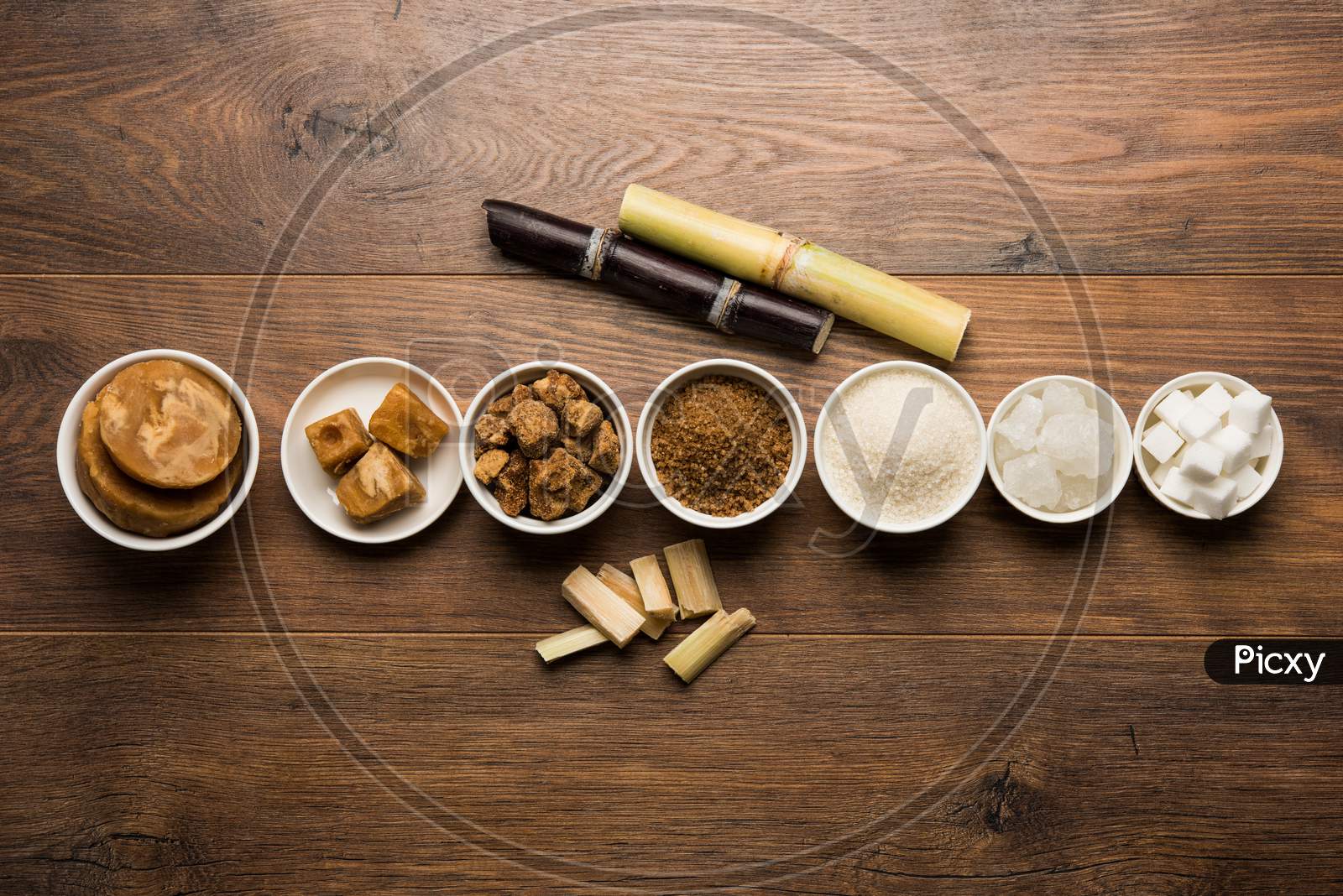How to Leverage sugar cane products in Product Development
Revealing the Manufacturing Tricks Behind Sugar Cane and Its Diverse Series Of Products
The manufacturing journey of sugar cane is intricate and multi-faceted. It begins in the fields, where mindful harvesting strategies established the stage for ideal sugar removal. The procedure includes numerous stages, consisting of juice extraction and refining - sugar cane products. Sugar cane's possible extends much beyond plain sweet taste. Innovations in handling and sustainable methods are reshaping its duty in modern markets. What exists ahead for this functional crop? The answers may stun those thinking about its future
The Journey of Sugar Cane: From Area to Manufacturing facility

As sugar cane persuades gently in the tropical breeze, it starts a transformative trip from field to manufacturing facility. The lively eco-friendly stalks, abundant in sucrose, are grown under optimal conditions, gaining from enough sunshine and rains. Farmers meticulously monitor the development, guaranteeing the plants reach their peak maturation, which is important for making best use of sugar content.Once matured, the cane is gotten ready for harvesting, where its coarse framework holds the guarantee of pleasant products. The journey continues as the stalks are moved to processing centers, where they undergo a collection of thorough steps. At the manufacturing facility, the cane is cleaned, shredded, and pushed to extract the juice. This juice is then cleared up and evaporated, leading the way for crystallization. Each phase of this trip is essential, as it eventually determines the top quality of the sugar and other products derived from this versatile crop.
Collecting Methods: The Primary Step in Production
Collecting sugar cane needs accuracy and ability, as the timing and strategy straight affect the high quality of the last item. The procedure commonly begins with establishing the excellent harvest time, which is important; sugar material comes to a head prior to the plant reaches full maturation. Cultivators commonly count on experience and agricultural signs to determine when to harvest.Two main methods dominate the gathering landscape: guidebook and mechanical approaches. Manual harvesting, though labor-intensive, permits careful choice of stalks and minimizes damages. Employees make use of machetes to reduce the cane near to the base, guaranteeing the stalks remain intact for processing.Mechanical harvesting, on the other hand, makes use of customized devices to reduce and collect the cane promptly. While this method greatly raises performance, it might lead to higher levels of debris and reduced sugar content. Eventually, the picked technique affects not only the amount but likewise the top quality of sugar cane provided to refining centers.
The Removal Refine: Unlocking the Sweetness
The extraction process is important for transforming collected sugar cane right into pleasant juice. Various techniques of juice extraction can substantially influence the high quality and yield of the final item. Comprehending these methods is vital for taking full advantage of the benefits of sugar cane manufacturing.
Gathering Techniques Explained
Launching the sweetness of sugar cane begins with exact harvesting techniques that assure maximum return and high quality. The process usually entails reducing the cane at ground level, making certain very little damage to the plant and permitting regrowth. Harvesters usually make use of machetes or specialized devices, depending on the scale of the operation. Timing is essential; collecting occurs when the sugar web content reaches its optimal, generally during completely dry seasons. Furthermore, employees have to be educated to recognize the very best stalks, avoiding those that are too old or diseased. Reliable transportation to processing centers is additionally crucial, as hold-ups can result in sugar degradation (sugar cane products). These precise strategies eventually lay the structure for creating high-quality sugar and its diverse byproducts
Juice Removal Approaches
Juice extraction is a vital action in changing sugar cane right into its pleasant essence. This procedure usually involves a number of approaches, each made to successfully draw out the sweet liquid from the fibrous stalks. The most usual method is milling, where the sugar cane is crushed between heavy rollers to launch the juice. An additional method is diffusion, which employs warm water to liquify the sugar from the cane fibers, making it a much more effective alternative for massive procedures. Furthermore, some producers use screw presses, which use mechanical pressure to essence juice. After extraction, the juice undertakes explanation to eliminate impurities before additional handling. Each method reflects the market's concentrate on making best use of return and guaranteeing high-grade sugar manufacturing.
Refining Sugar: Transforming Raw Cane Into Granulated Gold
The refining process is necessary for transforming raw cane sugar into the pure, granulated product customers acknowledge. sugar cane products. This includes a series of extraction and filtering actions to eliminate impurities, adhered to by formation and drying strategies that enhance the sugar's top quality. Comprehending these techniques reveals the complex transformation from cane to the gold granules that sweeten countless foods and beverages
Removal and Filtering Refine
A critical stage in the sugar manufacturing trip entails the removal and purification of juice from fresh gathered sugar cane. This process begins with squashing the cane to release its sweet juice, usually making use of large rollers or mills. The extracted juice includes not just sugar however additionally impurities, consisting of fibers and mud. To ensure the juice is ideal for further refining, it undertakes a purification procedure. This includes passing the juice through different filters and clarifiers right here to get rid of solid fragments and undesirable products. Chemicals such as lime may be contributed to assist in the clarification process. The outcome is a clear, raw cane juice that functions as the foundation for producing refined sugar, ready for succeeding phases of processing.

Crystallization and Drying Methods
After the extraction and purification processes generate clear raw cane juice, the following action in sugar production is condensation. This process entails steaming the juice to evaporate water, allowing sugar particles to create crystals. As the liquid thickens, it reaches supersaturation, prompting sugar to crystallize. The blend is then cooled down, advertising further crystal formation. As soon as crystallization is complete, the sugar crystals are separated from the staying syrup via centrifugation.The final phase involves drying out, where the crystals are revealed to warm air to get rid of residual wetness. This action is crucial, as it assures the product attains the wanted granulation and shelf stability. The result is pure, granulated sugar, prepared for packaging and distribution.
Past Sweet Taste: Diverse Products From Sugar Cane
While sugar cane is mainly recognized for its pleasant flavor, its adaptability prolongs much past plain sweetness. This resilient plant functions as the source for a myriad of items that satisfy varied sectors. Ethanol, acquired from sugar cane fermentation, plays a vital function in renewable resource, serving as a cleaner alternative to nonrenewable fuel sources. Furthermore, molasses, a result of sugar refining, is made use of in animal feed, as well as in cooking and fermentation processes.Sugar cane's coarse residue, recognized as bagasse, is not thrown away; it is transformed right into eco-friendly product packaging products and acts as a biomass fuel resource. Different sugars and syrups acquired from sugar cane discover applications in the food and drink sector, adding to flavoring and conservation. The plant's fallen leaves can be used for thatching, while its juice is taken in as a rejuvenating beverage in several cultures. Sugar cane exemplifies farming potential beyond its sugary reputation.
Technologies in Sugar Cane Handling
As developments in modern technology remain to improve various sectors, sugar cane processing is experiencing a significant transformation. Modern developments, consisting of automated harvesting and precision farming, are enhancing performance and return. Drones and sensing units check plant health and wellness, allowing farmers to optimize irrigation and nutrient application, ultimately enhancing productivity.In handling centers, cutting edge machinery and equipment enhance operations. Advancements such as enzymatic processing and view publisher site progressed filtering methods improve the removal of sugar while reducing waste. On top of that, the fostering of real-time data analytics makes it possible for makers to check processes carefully, making sure top quality control and minimizing downtime.Biotechnology is additionally playing an essential role; hereditary adjustments enhance sugar cane's resistance to pests and environmental stress factors. These innovations not only contribute to greater sugar returns however also promote the production of varied by-products from the cane, broadening its industrial applications. In general, these technologies are leading the method for a more effective and lasting sugar cane handling sector.
The Future of Sugar Cane: Sustainability and Bioproducts
The future of sugar cane manufacturing is progressively linked with sustainability and the development of bioproducts. As global demand for environmentally friendly choices rises, the sugar cane industry is pivoting in the direction of techniques that lessen ecological impact. Developments in cultivation techniques, such as precision agriculture and integrated bug administration, goal to boost yield while lowering source consumption.Furthermore, sugar cane is being checked out as a resources for biofuels, bioplastics, and various other lasting items. These bioproducts not only provide a renewable choice to traditional nonrenewable fuel sources and plastics however also add to a round economy by using waste materials.Research and advancement in biotechnology are leading the way for enhanced sugar cane ranges that need less water and fertilizers, better advertising sustainability. By embracing these innovations, the sugar cane sector can protect its future while dealing with vital environmental challenges, showing its potential as a cornerstone of Find Out More sustainable advancement.
Frequently Asked Concerns
What Are the Ecological Effects of Sugar Cane Farming?
The ecological effects of sugar cane farming include deforestation, soil deterioration, and water contamination. Furthermore, the usage of chemicals can damage biodiversity, while monoculture practices reduce ecosystem durability, positioning long-lasting sustainability obstacles for agricultural practices.

Exactly How Does Sugar Cane Compare to Other Sugar Nutritionally?
Sugar cane, abundant in carbohydrates, offers power however lacks important nutrients compared to options like honey or maple syrup, which offer minerals and vitamins. Its high glycemic index likewise increases issues over blood sugar level spikes.
What Are the Health And Wellness Conveniences of Consuming Sugar Cane Products?
The health benefits of consuming sugar cane items include enhanced food digestion, enhanced power levels, and potential antioxidant residential or commercial properties. Furthermore, they may support hydration and offer necessary vitamins and minerals, contributing positively to overall wellness.
Exactly How Is Sugar Cane Waste Utilized After Processing?
After processing, sugar cane waste is made use of in numerous methods, consisting of biofuel manufacturing, pet feed, and natural fertilizers. This lasting technique minimizes environmental influence while optimizing source performance within the sugar market.
What Are the Historic Origins of Sugar Cane Farming?
